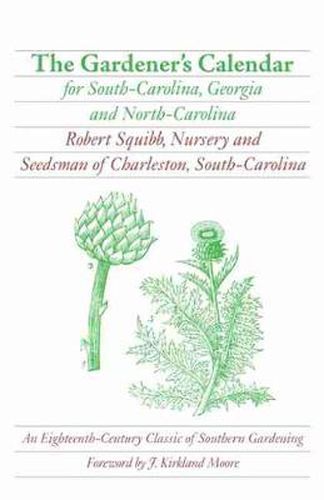Readings Newsletter
Become a Readings Member to make your shopping experience even easier.
Sign in or sign up for free!
You’re not far away from qualifying for FREE standard shipping within Australia
You’ve qualified for FREE standard shipping within Australia
The cart is loading…






Robert Squibb first published his Gardener’s Calendar in Charleston, South Carolina, in 1787–a time when what came to the table had come from the backyard, and households that wished to eat well (or perhaps to eat at all) had to cultivate garlick, shallots, coriander, and small sallading, as well as spinage,
cellery,
plumbs, and pease in their kitchen gardens. Squibb’s planting guide was welcomed by eighteenth-century gardeners; for the first time they had professional counsel about specific plants that would thrive in the region and a month-by-month guide to the nurturing of their fruits and vegetables. No longer need they guess at the effects of the climate lag between England and Georgia or Carolina as they had done while using British calendars.
This edition follows closely the format of the 1787 volume, retaining eighteenth-century spelling, punctuation, and ornament. Though nearly two centuries have passed, this classic of southern gardening remains a delightfully instructive planting guide.
$9.00 standard shipping within Australia
FREE standard shipping within Australia for orders over $100.00
Express & International shipping calculated at checkout
Robert Squibb first published his Gardener’s Calendar in Charleston, South Carolina, in 1787–a time when what came to the table had come from the backyard, and households that wished to eat well (or perhaps to eat at all) had to cultivate garlick, shallots, coriander, and small sallading, as well as spinage,
cellery,
plumbs, and pease in their kitchen gardens. Squibb’s planting guide was welcomed by eighteenth-century gardeners; for the first time they had professional counsel about specific plants that would thrive in the region and a month-by-month guide to the nurturing of their fruits and vegetables. No longer need they guess at the effects of the climate lag between England and Georgia or Carolina as they had done while using British calendars.
This edition follows closely the format of the 1787 volume, retaining eighteenth-century spelling, punctuation, and ornament. Though nearly two centuries have passed, this classic of southern gardening remains a delightfully instructive planting guide.